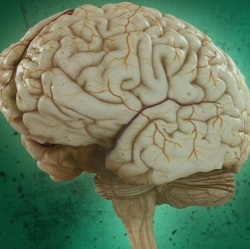
The study shows that people diagnosed with anxiety are less able to distinguish between a neutral, "safe" stimulus (in this case, the sound of a tone) and one that was earlier associated with the threat of money loss or gain. When it comes to emotional experiences, they show a behavioral phenomenon known as over-generalization.
"We show that in patients with anxiety, emotional experience induces plasticity in brain circuits that lasts after the experience is over," says Rony Paz of Weizmann Institute of Science in Israel. "Such plastic changes occur in primary circuits that later mediate the response to new stimuli, resulting in an inability to discriminate between the originally experienced stimulus and a new similar stimulus. Therefore, anxiety patients respond emotionally to such new stimuli as well, resulting in anxiety even in apparently irrelevant new situations. Importantly, they cannot control this, as it is a perceptual inability to discriminate."
In the study, Paz and his colleagues trained people with anxiety to associate three distinct tones with one of three outcomes: money loss, money gain, or no consequence. In the next phase, study participants were presented with one of 15 tones and were asked whether they’d heard the tone before in training or not. If they were right, they were rewarded with money.
The best strategy was not to mistake (or over-generalize) a new tone for one they’d heard in the training phase. But the researchers found that people with anxiety were more likely than healthy controls to think that a new tone was actually one of the tones they’d heard earlier. That is, they were more likely to mistakenly associate a new tone with money loss or gain. Those differences weren’t explained by differences in participants’ hearing or learning abilities. They simply perceived the sounds that were earlier linked to an emotional experience differently.
Functional magnetic resonance images (fMRIs) of the brains of people with anxiety versus healthy controls showed differences in brain responses, too. Those differences were mainly found in the amygdala, a brain region related to fear and anxiety, and also in primary sensory regions of the brain. These results strengthen the idea that emotional experiences induce changes in sensory representations in anxiety patients’ brains.
The findings might help to explain why some people are more prone to anxiety than others, although the underlying brain plasticity that leads to anxiety isn’t in itself "bad," Paz says.
"Anxiety traits can be completely normal, and even beneficial evolutionarily. Yet an emotional event, even minor sometimes, can induce brain changes that might lead to full-blown anxiety," he says.
